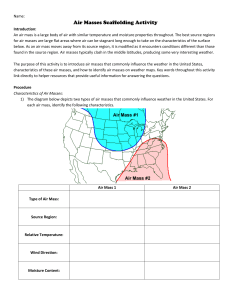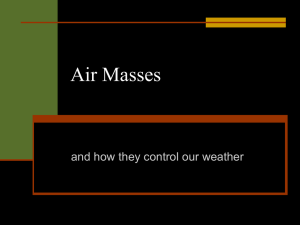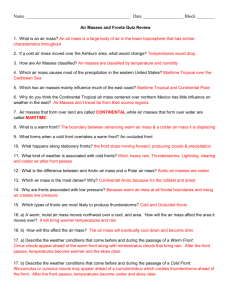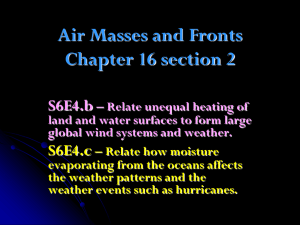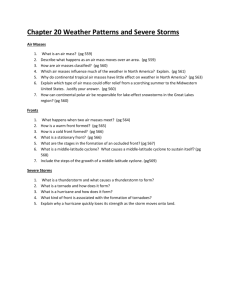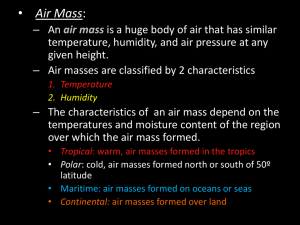Reading (page 55) Map
advertisement
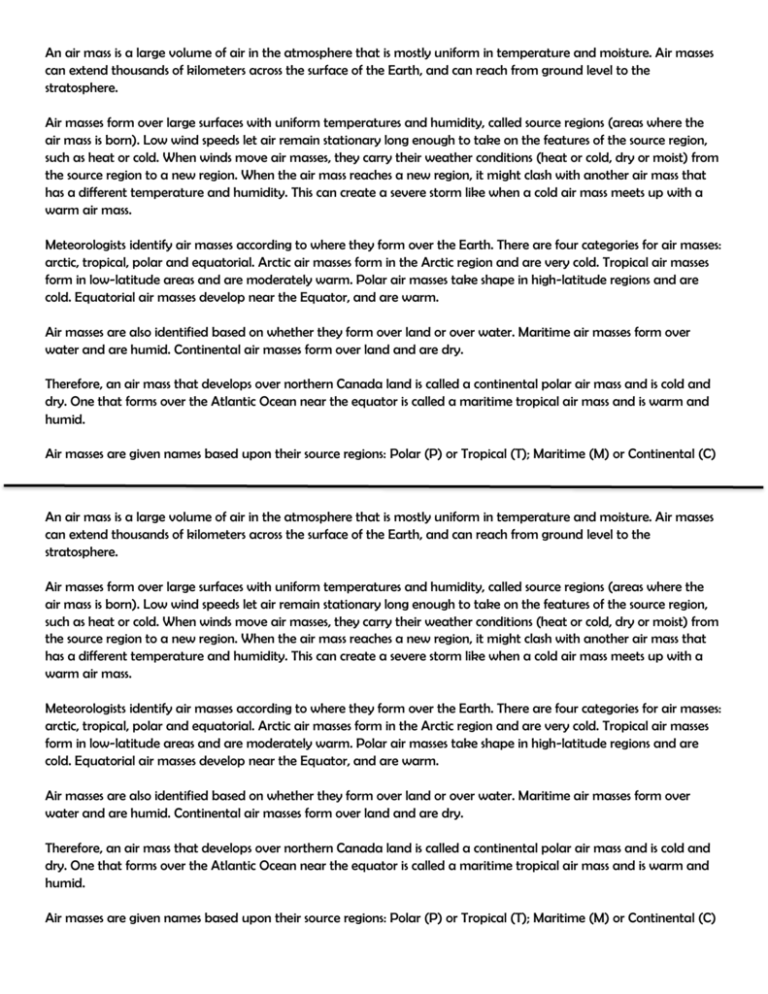
An air mass is a large volume of air in the atmosphere that is mostly uniform in temperature and moisture. Air masses can extend thousands of kilometers across the surface of the Earth, and can reach from ground level to the stratosphere. Air masses form over large surfaces with uniform temperatures and humidity, called source regions (areas where the air mass is born). Low wind speeds let air remain stationary long enough to take on the features of the source region, such as heat or cold. When winds move air masses, they carry their weather conditions (heat or cold, dry or moist) from the source region to a new region. When the air mass reaches a new region, it might clash with another air mass that has a different temperature and humidity. This can create a severe storm like when a cold air mass meets up with a warm air mass. Meteorologists identify air masses according to where they form over the Earth. There are four categories for air masses: arctic, tropical, polar and equatorial. Arctic air masses form in the Arctic region and are very cold. Tropical air masses form in low-latitude areas and are moderately warm. Polar air masses take shape in high-latitude regions and are cold. Equatorial air masses develop near the Equator, and are warm. Air masses are also identified based on whether they form over land or over water. Maritime air masses form over water and are humid. Continental air masses form over land and are dry. Therefore, an air mass that develops over northern Canada land is called a continental polar air mass and is cold and dry. One that forms over the Atlantic Ocean near the equator is called a maritime tropical air mass and is warm and humid. Air masses are given names based upon their source regions: Polar (P) or Tropical (T); Maritime (M) or Continental (C) An air mass is a large volume of air in the atmosphere that is mostly uniform in temperature and moisture. Air masses can extend thousands of kilometers across the surface of the Earth, and can reach from ground level to the stratosphere. Air masses form over large surfaces with uniform temperatures and humidity, called source regions (areas where the air mass is born). Low wind speeds let air remain stationary long enough to take on the features of the source region, such as heat or cold. When winds move air masses, they carry their weather conditions (heat or cold, dry or moist) from the source region to a new region. When the air mass reaches a new region, it might clash with another air mass that has a different temperature and humidity. This can create a severe storm like when a cold air mass meets up with a warm air mass. Meteorologists identify air masses according to where they form over the Earth. There are four categories for air masses: arctic, tropical, polar and equatorial. Arctic air masses form in the Arctic region and are very cold. Tropical air masses form in low-latitude areas and are moderately warm. Polar air masses take shape in high-latitude regions and are cold. Equatorial air masses develop near the Equator, and are warm. Air masses are also identified based on whether they form over land or over water. Maritime air masses form over water and are humid. Continental air masses form over land and are dry. Therefore, an air mass that develops over northern Canada land is called a continental polar air mass and is cold and dry. One that forms over the Atlantic Ocean near the equator is called a maritime tropical air mass and is warm and humid. Air masses are given names based upon their source regions: Polar (P) or Tropical (T); Maritime (M) or Continental (C)

